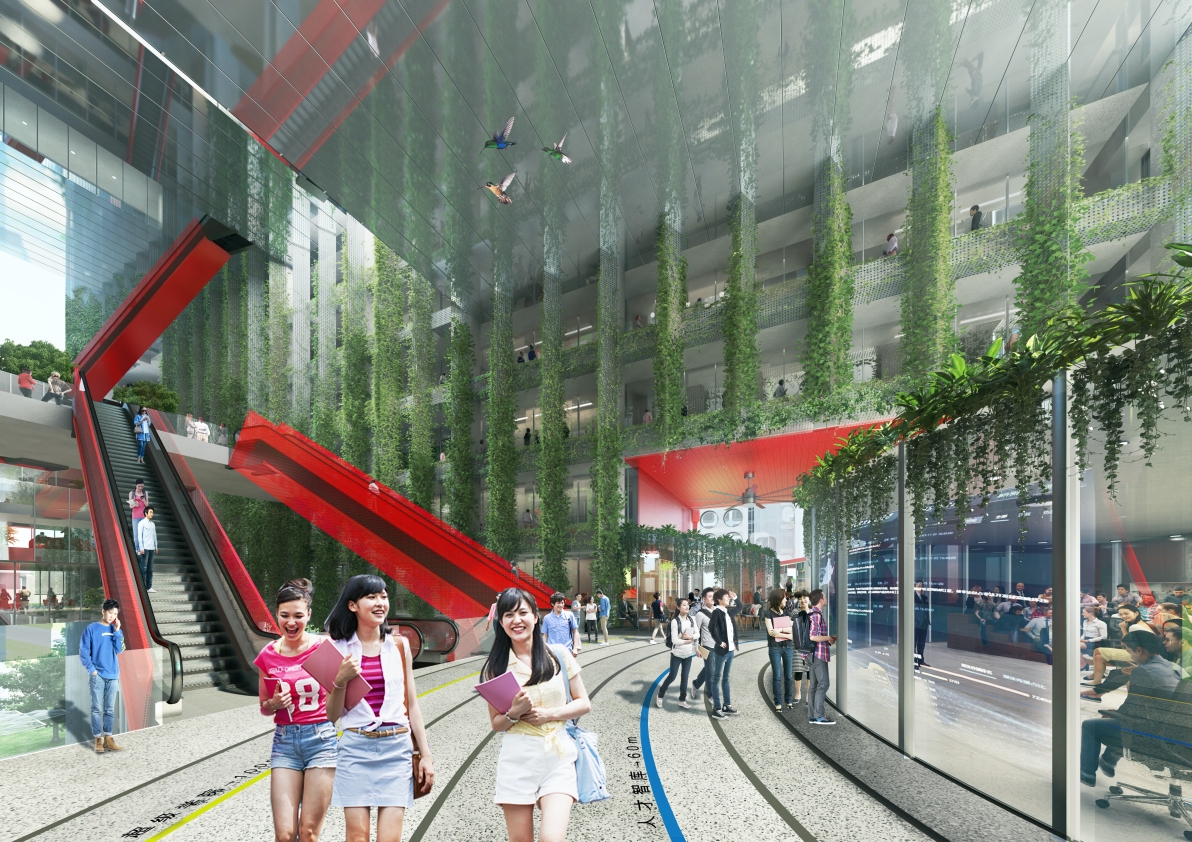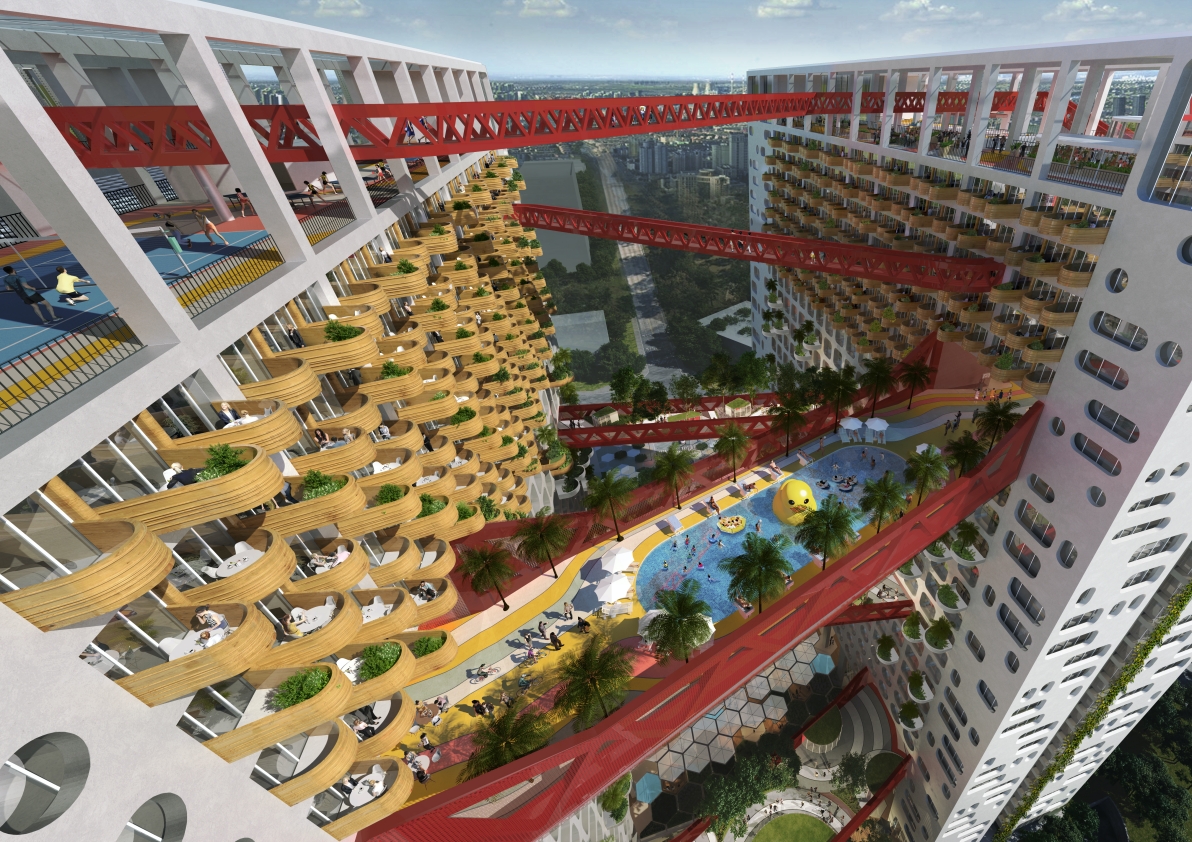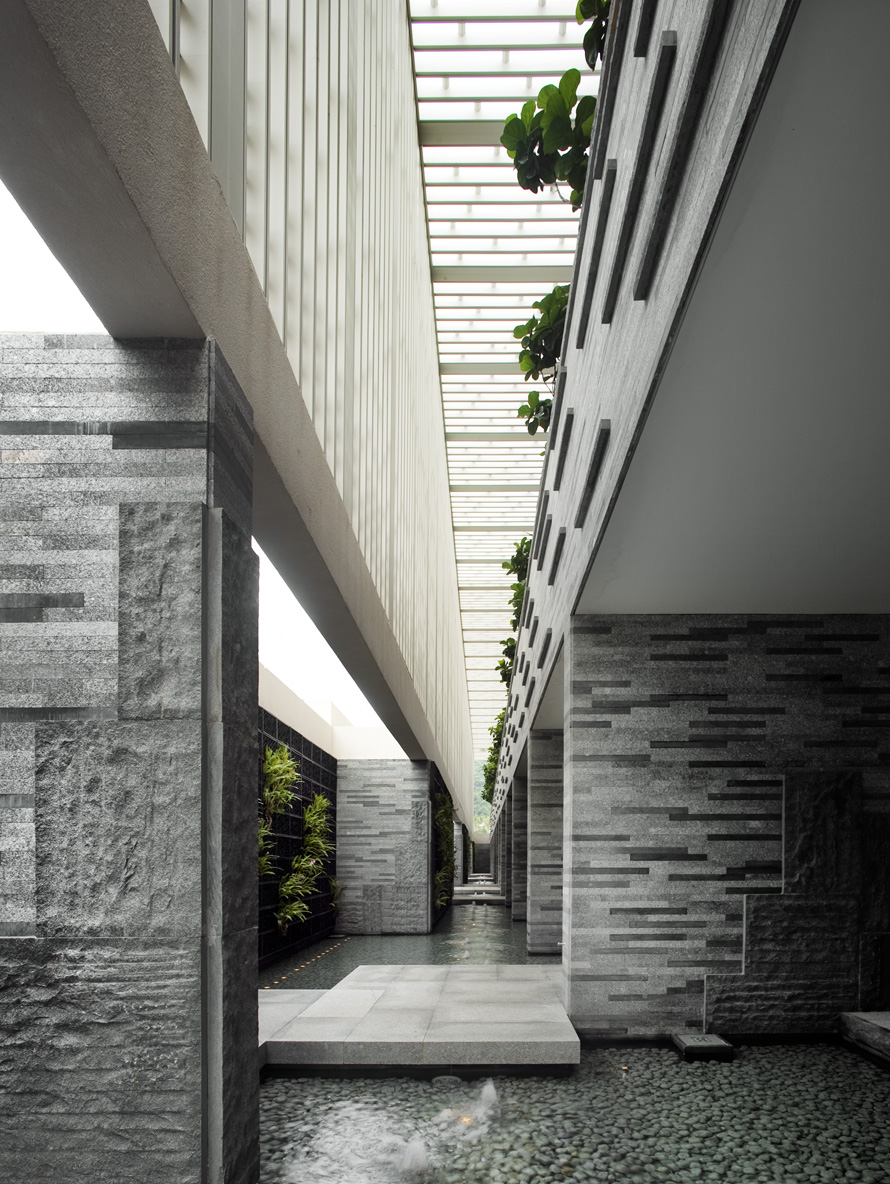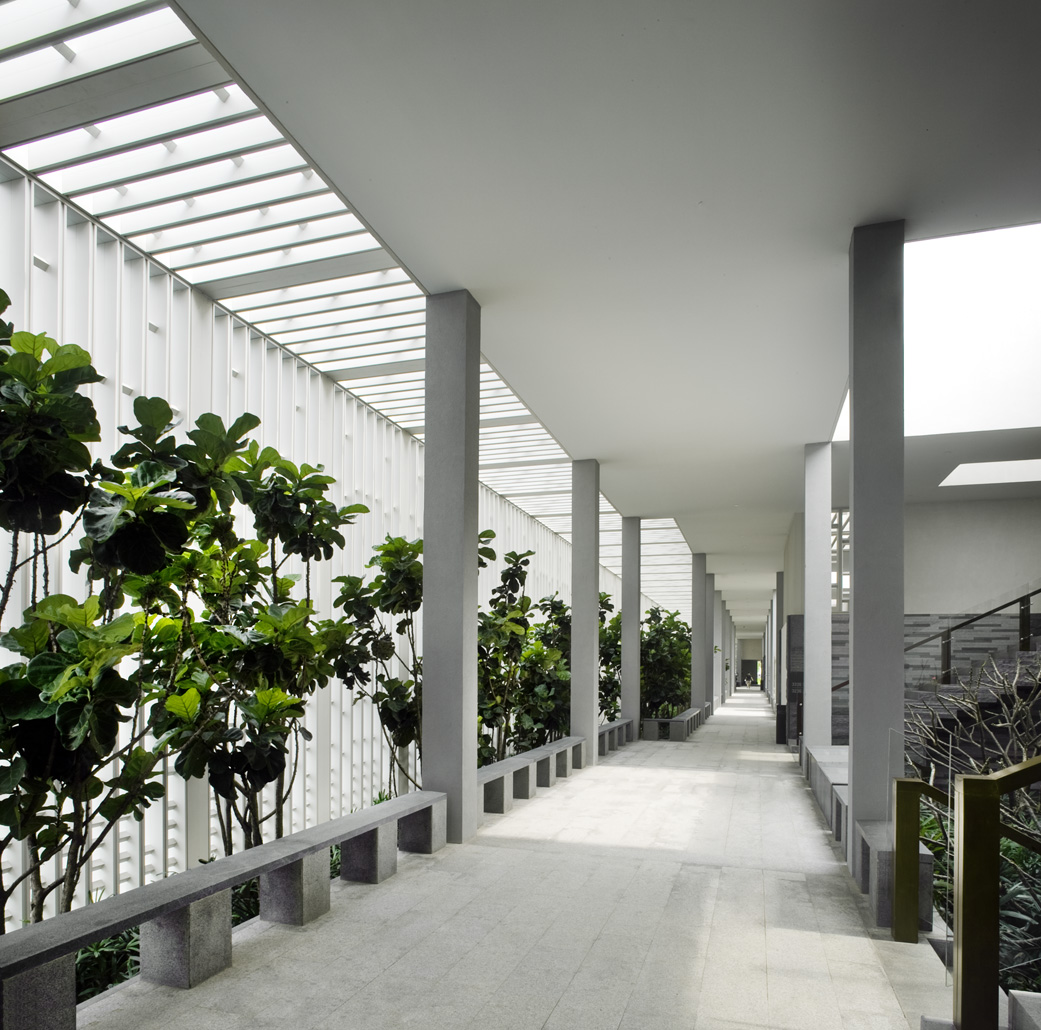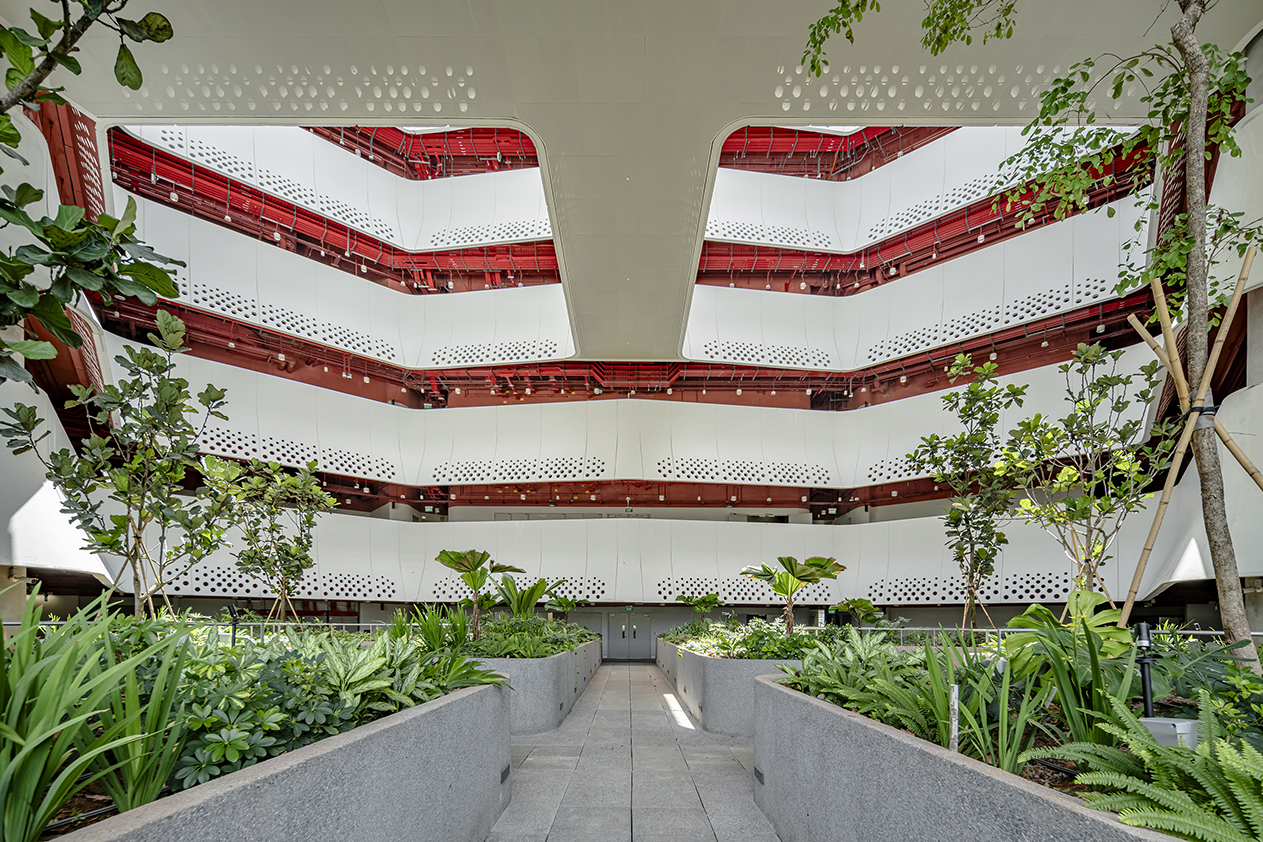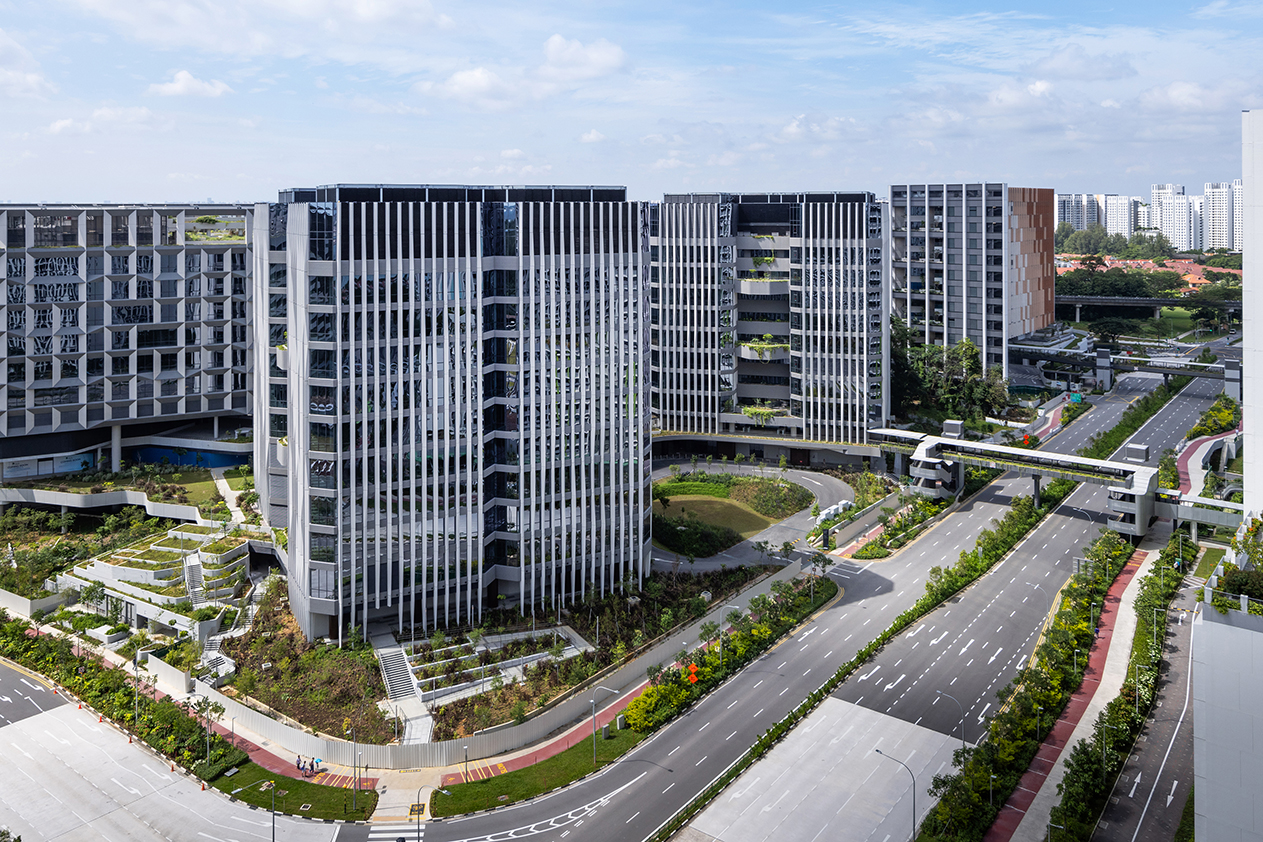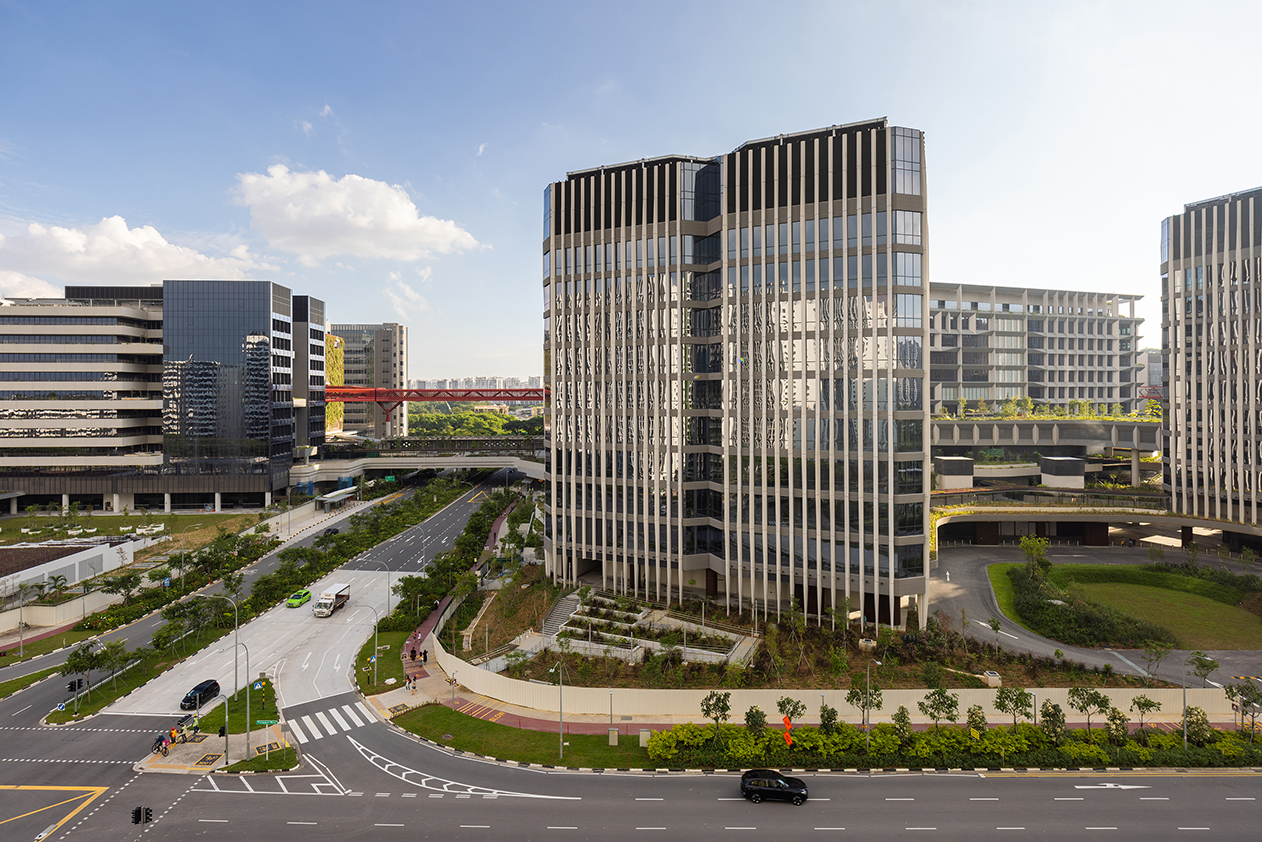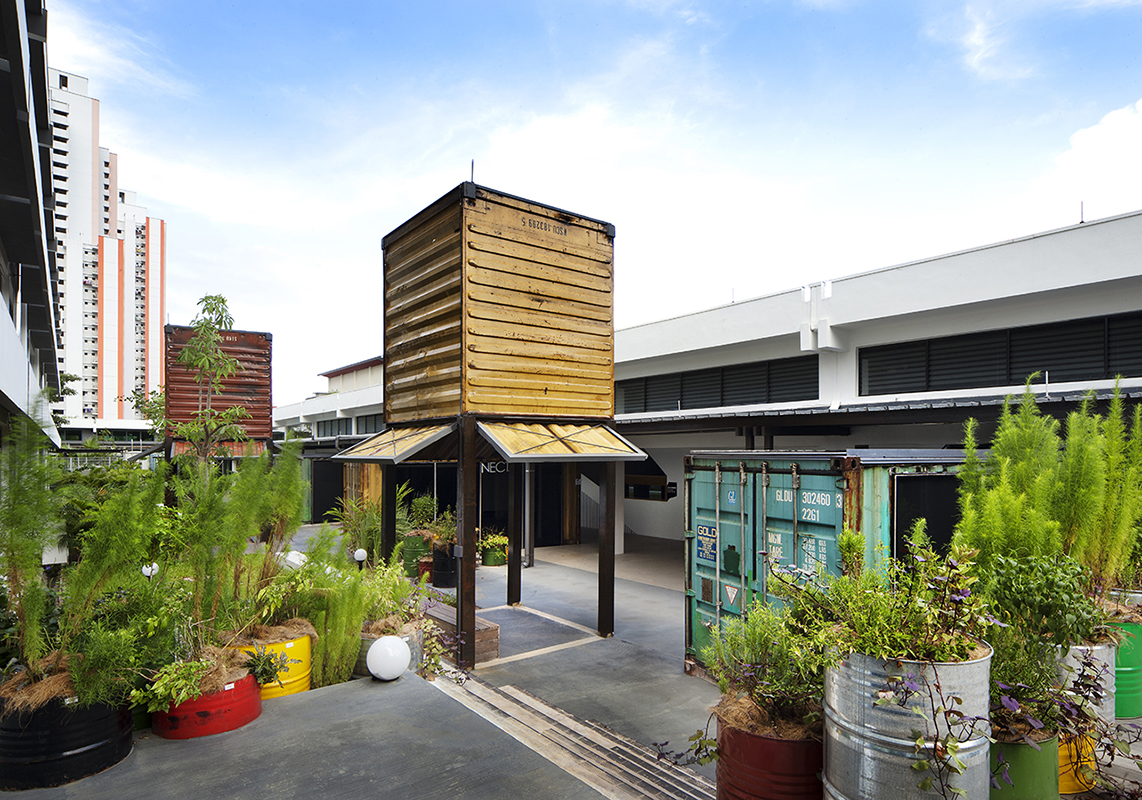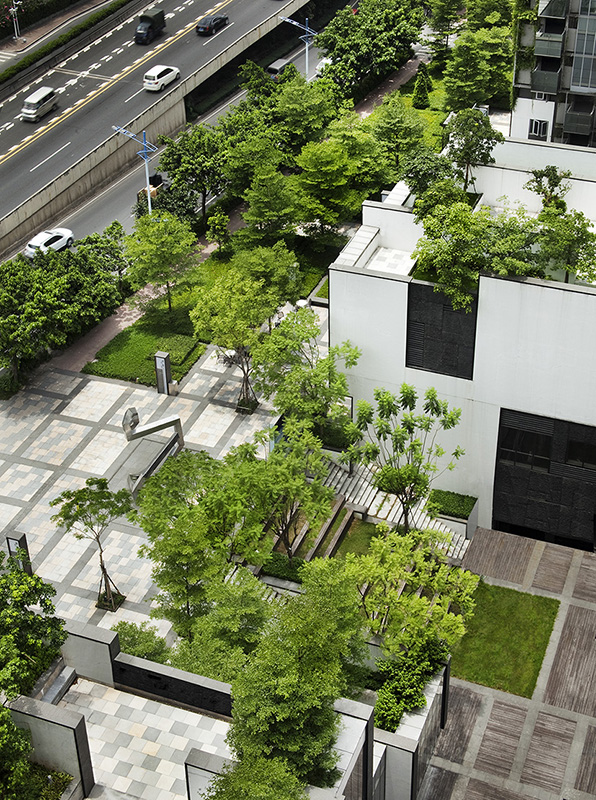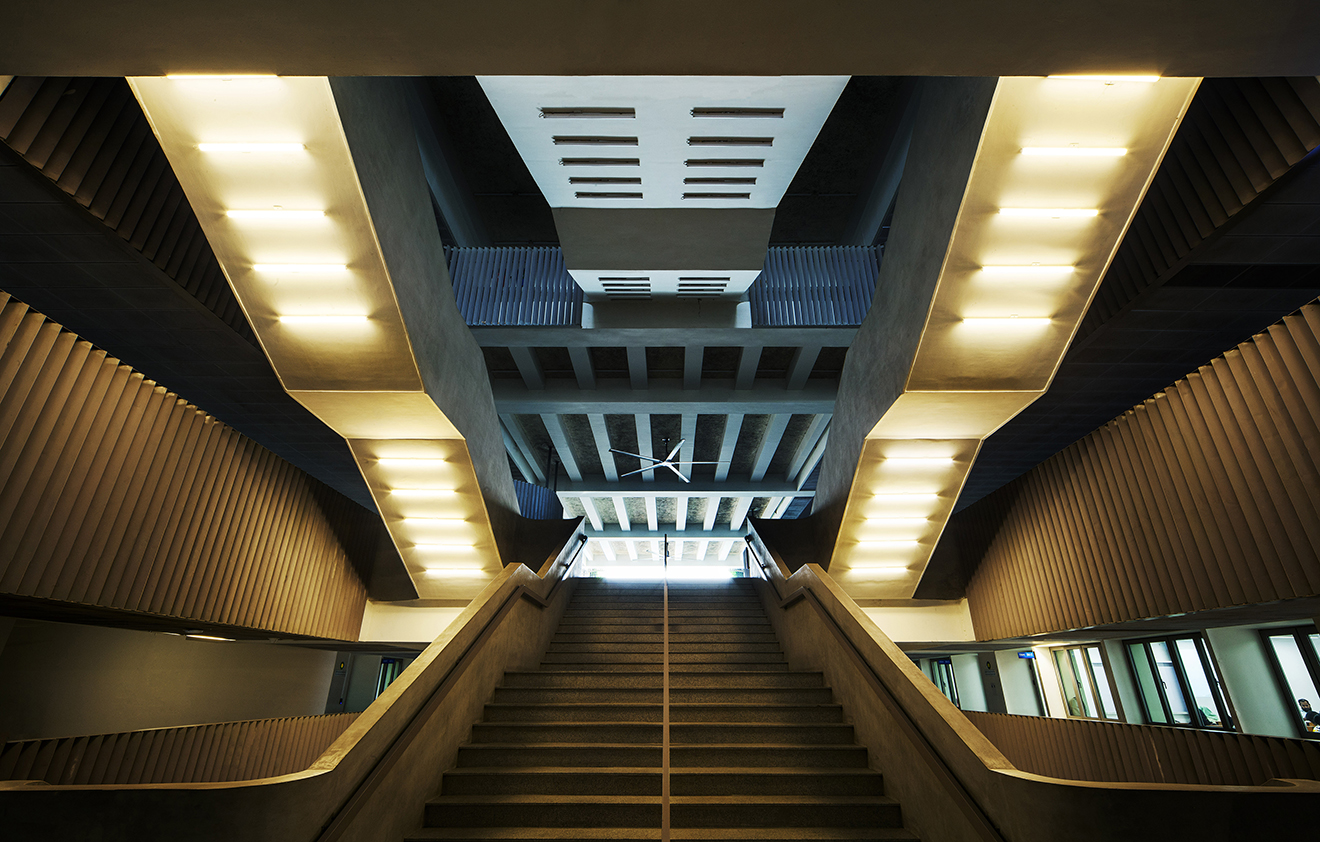Duxton Plain Competition
WOHA explored strategies of high-density living in a high-rise tropical environment, and urban strategies unique to the site. A central issue to the design was what Singaporean public housing should be. WOHA proposed that for subsidised housing, a higher degree of community interaction would be encouraged, building of community spirit. The design facilitated several scales of interaction.
At city level, a strong image on the skyline of the cluster of towers with hanging gardens was proposed. At the neighbourhood level, a strong street edge was made based on the shophouse structural bay and form, with commercial activities, a five-foot way, and the public park extended under the towers the popular Duxton Plain Park. This form enhanced the Chinatown busy street edge, while providing recreational areas within the site for public use. Views down the historic streets were improved by the rhythm and scale of the street-edge.
At village level, the “sky villages” were created – homes are placed in a high-rise community, linked by “sky streets” and “sky parks”. The covered sky streets led from the local village to the high-speed lifts, which brought the inhabitants down to street level. Sky parks were provided as places for recreation and socialising. In these common areas, people would be brought into contact in a natural way, and social bonds formed.











